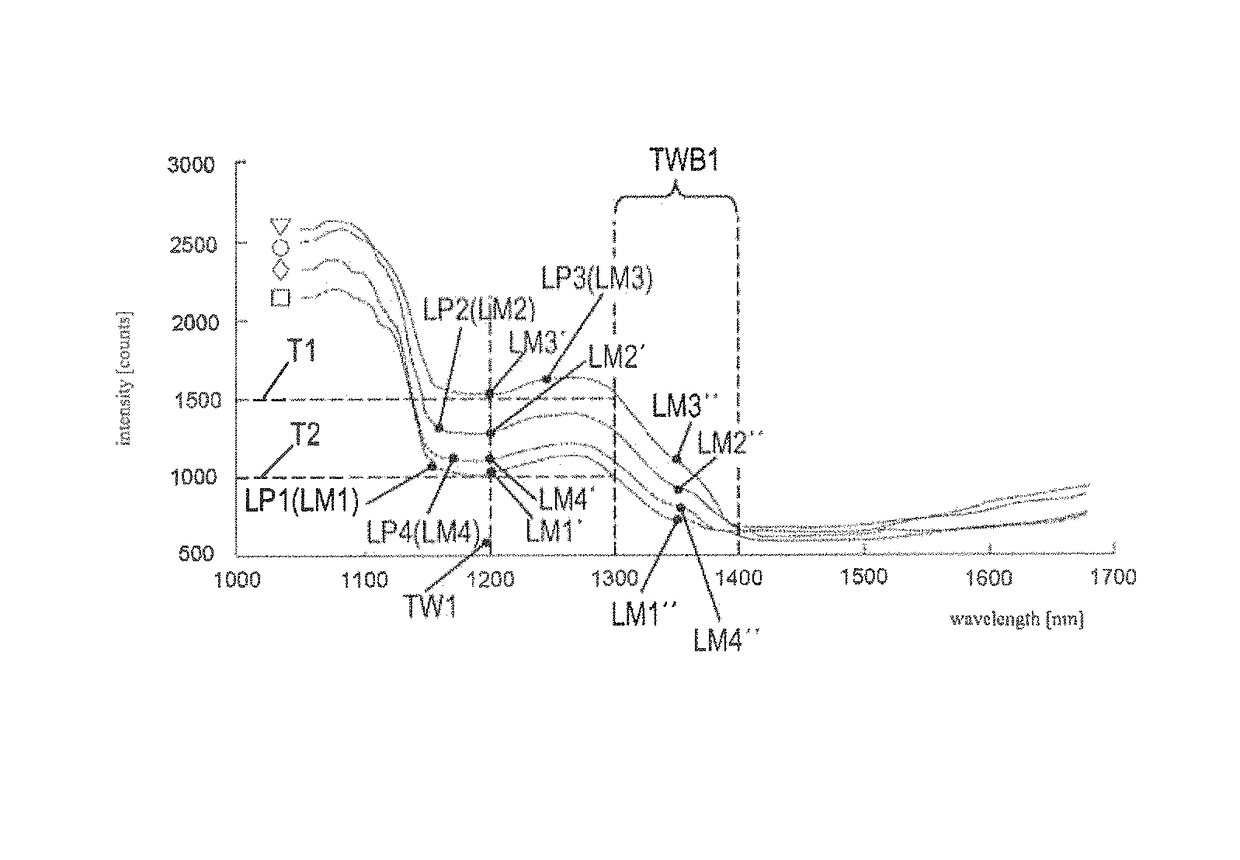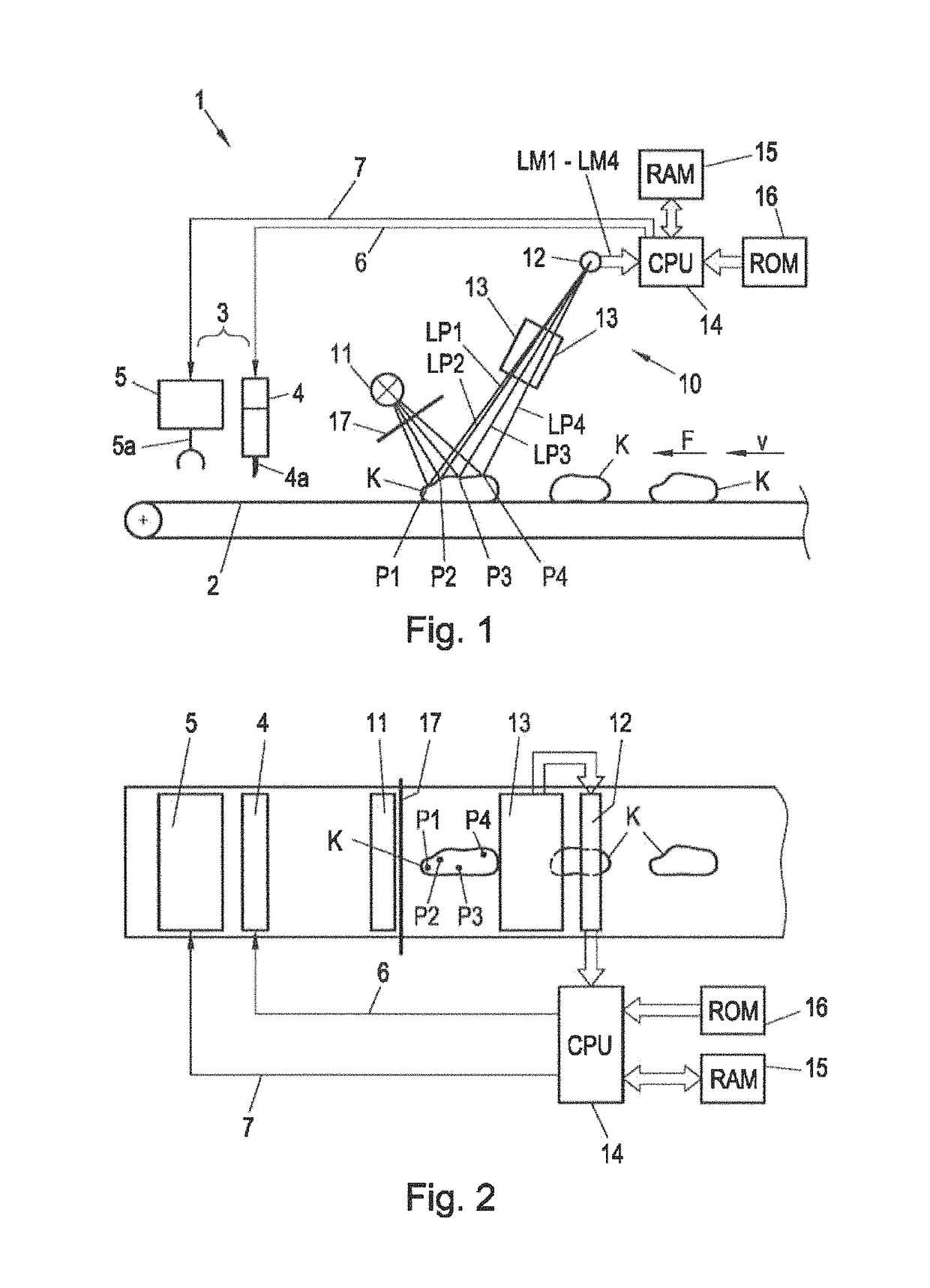Method, sensor unit and machine for detecting “sugar top” defects in potatoes
a sensor unit and potato technology, applied in the field of potato “sugar end” defects detection, can solve the problems of inability to recognize many defects and impurities of fruits and vegetables using known technologies, prone to these “sugar end” defects in potatoes, and the final potato product is optically non-appealing and hence non-marketable, so as to achieve a compact setup of the sensor unit and fast online inspection of potatoes
- Summary
- Abstract
- Description
- Claims
- Application Information
AI Technical Summary
Benefits of technology
Problems solved by technology
Method used
Image
Examples
Embodiment Construction
[0059]In the FIGS. 1 and 2 there is schematically depicted in a lateral view and a top view, respectively, an inventive machine 1 for detecting and treating potatoes K having “sugar end” defects. The machine 1 comprises a conveyor device 2 for continuously or discontinuously conveying potatoes K along a conveying direction F. In the case of continuous conveyance, this is carried out at a defined conveying velocity v. The conveyor device 2 may be configured, for example, as a conveyor belt, roll conveyor, chute or anything similar. The machine 1 further comprises a treatment device 3 for potatoes K. This treatment device 3 comprises potato sorting means 5 and / or a cutting device 4 for cutting off the ends of potatoes having “sugar ends”. In the FIGS. 1 and 2 there are schematically illustrated the potato sorting means 5 having a gripper 5a. It is to be understood, however, that instead of the gripper there may also be used other means such as ejector means (e.g., on the basis of air ...
PUM
| Property | Measurement | Unit |
|---|---|---|
| wavelength range | aaaaa | aaaaa |
| wavelength range | aaaaa | aaaaa |
| wavelength ranges | aaaaa | aaaaa |
Abstract
Description
Claims
Application Information
 Login to View More
Login to View More - R&D
- Intellectual Property
- Life Sciences
- Materials
- Tech Scout
- Unparalleled Data Quality
- Higher Quality Content
- 60% Fewer Hallucinations
Browse by: Latest US Patents, China's latest patents, Technical Efficacy Thesaurus, Application Domain, Technology Topic, Popular Technical Reports.
© 2025 PatSnap. All rights reserved.Legal|Privacy policy|Modern Slavery Act Transparency Statement|Sitemap|About US| Contact US: help@patsnap.com



